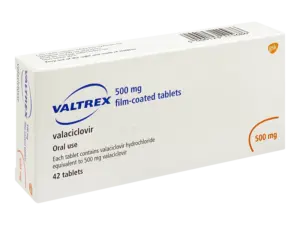Untangling what lies ahead of us: Women’s health & fertility tech.
Women have been told for decades that their health—and fertility in particular—is a puzzle with generalized answers but slow diagnosis. Women are often left waiting for a diagnosis for years due to conditions like endometriosis or Polycystic Ovary Syndrome (PCOS) after a medical system that dismissed their pain. Today, that landscape is undergoing a seismic shift.
We are finally switching from a future to become designed as a future of personalization, data, and technology of non-invasive answers. Recent studies done just in the past few weeks is not only presenting hope but also clarity. Artificial intelligence in the IVF lab and simple diagnostic tests for complex conditions – here are the innovations redefining reproductive health as we know it.
- The Endometriosis Mystery Solved: A Diagnostic Breakthrough
The Issue: Endometriosis is a condition where tissue similar to the lining of the uterus grows outside the uterus. It affects around 10% of women around the world. Getting diagnosed with the disease takes an average of 7-10 years, yet it causes debilitating pain as well as infertility. Why? The final diagnosis has been given by invasive laparoscopic surgery.
A new study published in The Lancet Digital Health at the end of October 2025 has validated a non-invasive diagnostic test based on salivary microRNAs. A group of researchers from universities have identified a unique “signature” of 10 microRNAs that distinguishes women with the endometriosis from those without.
MicroRNAs are small molecules that help regulate how genes work. The rogue endometrial tissue spews out a specific pattern of these molecules, which can be detected in bodily fluids like saliva or menstrual blood. With an analysis of this signature, a high accuracy probability of endometriosis can be determined without a single cut.
Why It Matters: This changes everything. What it means is that a woman might just be able to give a simple saliva sample at her gynecologist’s office and get a reliable diagnosis, which can take a decade off the time it would take to get treatment. When you discover it early, you get pain treatment early, you plan your baby better, and you live better.
Information about the research done on microRNA diagnostics for endometriosis as seen in The Lancet/Science Translational Medicine. For a similar real-world basis, see: https://www.mdpi.com/2075-4418/14/4/387
- AI in the IVF Lab: Smarter Embryo Selection
The Problem: IVF is an emotional, physical, financial marathon. Choosing embryos is one of the most vital steps. A doctor will check the embryos underneath a microscope. They will look for one which is most likely to implant.
Artificial Intelligence Outperforms Human Eyes for the First Time The AI platform and the time-lapse imaging (from an embryoscope) analysis of embryo development were shown in new data at the 2025 ASRM Scientific Congress. The AI tracks thousands of points which the human eye does not see as the exact time of cell division, slight change in structure, movement of cytoplasm.
The deep-learning model learnt from hundreds of thousands of embryo videos with known implantation outcomes and this is how it works. It learned to spot the subtle signs of a “healthy” embryo that is likely to succeed. With the aid of new clinical trials, this selection process led by artificial intelligence will give a greater than (15%) increase in implantation success per transfer. Furthermore, it is better at identifying embryos that will not implant, thereby saving patients money and emotional distress.
This technology creates a more successful and objective IVF process. It minimises the “gamble” factor, which may decrease the number of cycles after which a patient could conceive a pregnancy. It provides a scientifically sound, standardized level of care that will likely become the new norm at fertility clinics.
According to numerous studies presented at the 2025 ASRM Scientific Congress, the trend of Artificial Intelligence is being adopted in more and more fields, one of which is embryology. For foundational concepts, see: https://www.asrm.org/membership/asrm-member-groups/special-interest-groups/artificial-intelligence-special-interest-group-aisig/
- The Gut and Ovary Work together in PCOS
The issue of PCOS: Expression, that it is the most frequent endocrine disorder to occur in the reproductive age of the female. Nobody really knows why it happens. Treatment focuses on managing symptoms. Metformin or hormonal birth control are possible options.
A study published in Cell Metabolism just this week is already being hailed as one of the most important papers on gut health as researchers are focusing on the gut-ovary axis link. The researchers noticed that women experiencing PCOS have a different type of gut bacteria. The study also found a significant reduction in the number of SCFA-producing species.
The SCFAs play a crucial role in preserving the gut barrier and regulating inflammation. A leaky gut is what they call this condition. It lets inflammatory substances pass into the blood. It contributes to the insulin resistance and raised androgen levels that are responsible for symptoms of PCOS.
It really matters as it changes the treatment from fixing symptoms to fixing the causes of the disease. This paves the way for exciting new treatments like precise probiotics or prebiotics, as well as postbiotics, which are the SCFAs that can restore the gut signature of PCOS. It could offer a primary, non-hormonal method to treat PCOS and enhance fertility.
- Re-awakening the Ovary? The Cautious Hope of Rejuvenation.
Ovarian aging is the biggest cause of infertility as women get older. As women age, the number and crucially the quality of eggs decrease. This clock speeds up considerably for women with Premature Ovarian Insufficiency (POI).
Early work being done in the field of “ovarian rejuvenation” is drawing interest. The PRP means platelet-rich plasma might just be the answer! In an update of a multi-center study, released late in October 2025, the researchers find modest but significant results.
What is PRP Therapy?
To enhance ovarian function, this technique involves taking a woman’s own blood, centrifuging it to obtain serum containing the platelets that are rich in growth factors. Finally the serum is injected in the ovaries. This theory holds that such growth factors can “wake up” dormant, residual follicles, or enhance the overall ovarian environment to assist in the maturation of the existing eggs. Recent statistics revealed that a small number of women with POI and perimenopause managed to gain back their menstrual cycle and in a few cases, get pregnant (both naturally and through IVF) using their own eggs.
Why It’s Important: This is not a menopause “cure” or magic bullet. But, for patients told they have zero chance of a genetic child, these early results are very meaningful! This is a cautious first step towards the potential of being able to adjust the ovarian environment someday which may open up a new, albeit limited, possibility for fertility.
Author’s Conclusion.
In all this news runs a common strand, that of precision. We are finally leaving the era of guesswork behind. As we have learned about endometriosis and PCOS, researchers are ‘waking up’ to the why. We harness the objective power of AI to influence life-changing decisions in IVF, and we use the body’s own healing powers to address the fundamental biology of ageing.
This is an incredibly hopeful time in women’s health. A growing body of research has focused on women’s health and needs, which seems to be hope for the future. Women should no longer have to lose at the fertility game. Providing greater freedom of choice, we’re making the future of fertility the next big thing.




